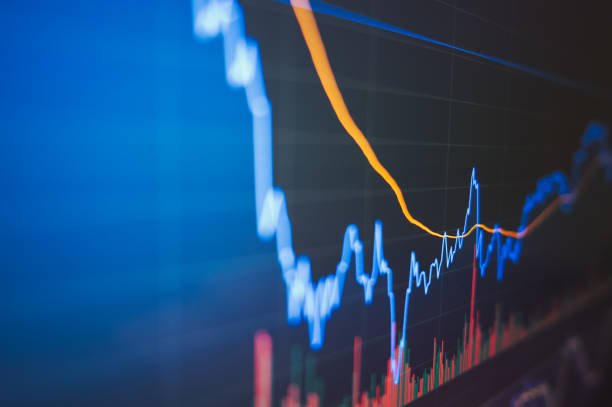The standard of living is an essential aspect that reflects the quality of life within a country or a region. It involves various factors, including income, access to goods and services, quality of healthcare and education, housing conditions, and more. Monitoring and comparing changes in the standard of living over time is vital for policymakers, economists, and social scientists to understand the dynamics of socio-economic development. This article will explain the methodologies, tools, and indicators that are commonly used to compare changes in the standard of living over a series of years.
Consumer Price Index (CPI) and Gross Domestic Product (GDP) per Capita: Comparing Changes in the Standard of Living Over a Series of Years
In order to compare changes in the standard of living over a series of years, we would use the Consumer Price Index (CPI) and Gross Domestic Product (GDP) per capita. The CPI measures the average change over time in the prices paid by urban consumers for a basket of goods and services, reflecting how much the average consumer is spending. The GDP per capita, on the other hand, is the total value of all the goods and services produced in a country in a given year, divided by the population. This can show how the economy is growing and how wealth is distributed. In the South African context, using both these measures together can help to provide a more complete picture of the standard of living, taking into account not just the cost of living but also the overall economic well-being of the country. For example, during the years of economic growth in the early 2000s, South Africa saw an increase in GDP per capita, reflecting improvements in the standard of living for many citizens.
Economic Indicators
Economic indicators are statistical metrics that provide insights into the overall economic conditions of a country or region. The following are some critical indicators used to compare changes in the standard of living:
- Gross Domestic Product (GDP) Per Capita: It represents the total economic output divided by the population, giving a per-person average. An increase in GDP per capita often indicates improved living standards.
- Consumer Price Index (CPI): The CPI measures changes in the average price level of a basket of consumer goods and services. It helps in understanding inflation or deflation trends that affect purchasing power.
- Income Distribution and Gini Coefficient: Analyzing income distribution and using the Gini coefficient helps in assessing income inequality. A more equitable income distribution usually signifies a higher standard of living.
- Unemployment Rate: Monitoring changes in unemployment rates over time helps in understanding the job market’s health and the opportunities available for the working population.
Social Indicators
Along with economic aspects, social indicators reflect the well-being and quality of life within a society:
- Human Development Index (HDI): HDI considers factors such as life expectancy, education level, and income to provide a composite measure of human development and living standards.
- Health and Education Metrics: Assessing healthcare access, life expectancy, literacy rates, and educational attainment provides a comprehensive view of social welfare and living conditions.
- Housing and Living Conditions: Analyzing housing quality, access to clean water, sanitation, and other basic amenities reflects the general living conditions of the population.
Use of Comparative Analysis
- Time Series Analysis: By analyzing data over a sequence of time periods, researchers can identify trends, cycles, and patterns that indicate changes in living standards.
- Cross-Country Comparison: Comparing indicators across different countries or regions helps in understanding disparities and identifying best practices that can be adopted.
- Benchmarking Against Standards: Utilizing international standards and benchmarks ensures that comparisons are made on an equal footing, allowing for meaningful insights.
Conclusion
Comparing changes in the standard of living over a series of years requires a multifaceted approach that combines both economic and social indicators. By using these metrics and employing comparative analysis, policymakers, researchers, and analysts can gain valuable insights into the socio-economic development and quality of life within a region or country. This knowledge is instrumental in formulating policies and interventions aimed at improving living standards and fostering sustainable development.
The standard of living is an essential aspect that reflects the quality of life within a country or a region. It involves various factors, including income, access to goods and services, quality of healthcare and education, housing conditions, and more. Monitoring and comparing changes in the standard of living over time is vital for policymakers, economists, and social scientists to understand the dynamics of socio-economic development. This article will explain the methodologies, tools, and indicators that are commonly used to compare changes in the standard of living over a series of years. For more in-depth information, please visit www.mycourses.co.za.
In Order to Compare Changes in the Standard of Living Over a Series of Years, We Would Use
Economic Indicators
Economic indicators are statistical metrics that provide insights into the overall economic conditions of a country or region. The following are some critical indicators used to compare changes in the standard of living:
- Gross Domestic Product (GDP) Per Capita: It represents the total economic output divided by the population, giving a per-person average. An increase in GDP per capita often indicates improved living standards.
- Consumer Price Index (CPI): The CPI measures changes in the average price level of a basket of consumer goods and services. It helps in understanding inflation or deflation trends that affect purchasing power.
- Income Distribution and Gini Coefficient: Analyzing income distribution and using the Gini coefficient helps in assessing income inequality. A more equitable income distribution usually signifies a higher standard of living.
- Unemployment Rate: Monitoring changes in unemployment rates over time helps in understanding the job market’s health and the opportunities available for the working population.
Social Indicators
Along with economic aspects, social indicators reflect the well-being and quality of life within a society:
- Human Development Index (HDI): HDI considers factors such as life expectancy, education level, and income to provide a composite measure of human development and living standards.
- Health and Education Metrics: Assessing healthcare access, life expectancy, literacy rates, and educational attainment provides a comprehensive view of social welfare and living conditions.
- Housing and Living Conditions: Analyzing housing quality, access to clean water, sanitation, and other basic amenities reflects the general living conditions of the population.
Use of Comparative Analysis
- Time Series Analysis: By analyzing data over a sequence of time periods, researchers can identify trends, cycles, and patterns that indicate changes in living standards.
- Cross-Country Comparison: Comparing indicators across different countries or regions helps in understanding disparities and identifying best practices that can be adopted.
- Benchmarking Against Standards: Utilizing international standards and benchmarks ensures that comparisons are made on an equal footing, allowing for meaningful insights.
Conclusion
Comparing changes in the standard of living over a series of years requires a multifaceted approach that combines both economic and social indicators. By using these metrics and employing comparative analysis, policymakers, researchers, and analysts can gain valuable insights into the socio-economic development and quality of life within a region or country. This knowledge is instrumental in formulating policies and interventions aimed at improving living standards and fostering sustainable development.




